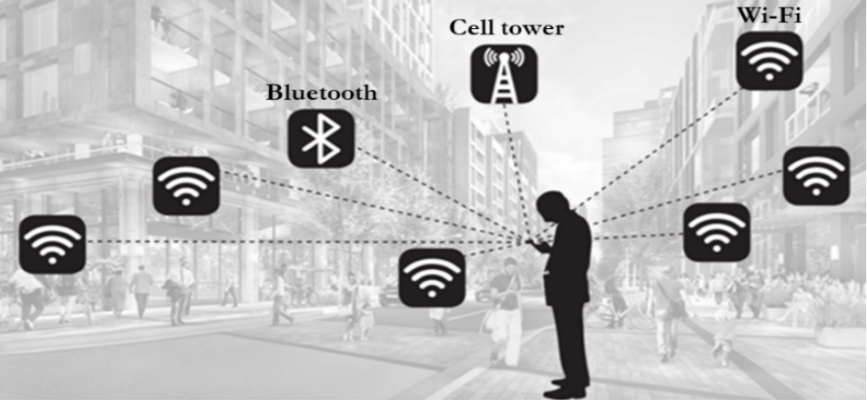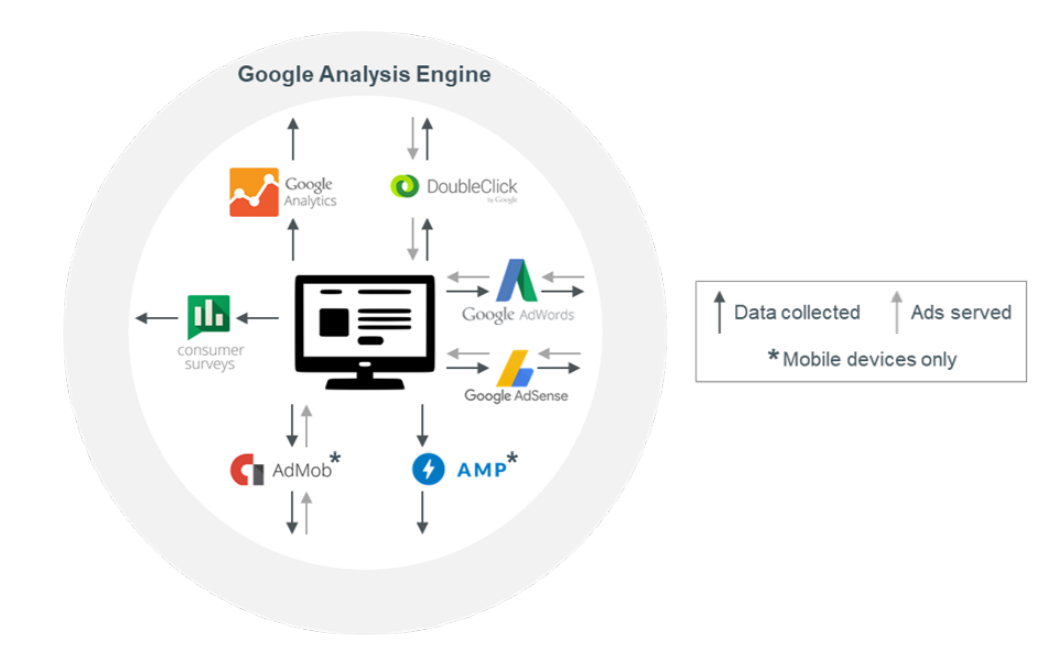Researchers claim that it’s almost impossible to hide from Google.

Google is the world's largest advertising company. It releases the most popular browser in the world, owns the most popular mobile platform and supports the work of the largest search engine on the Internet. Google’s video service, postal and map services have over 1 billion users (each of them). The company uses the ubiquitous prevalence of its products to track user behavior online and IRL, in order to subsequently target them with paid advertising. Google’s revenues directly depend on targeting accuracy and the vastness of the data collected.
Unfortunately, in modern conditions it is almost impossible to evade surveillance by Google. These conclusions came from experts from the organization Digital Content Next and the University of Vanderbilt. The results of their researchGoogle Data Collection (pdf) published in the public domain.

Here are some key facts that researchers have figured out:
- The Android smartphone in sleep mode (with an active Chrome browser in the background) transmits location information to Google 340 times during a 24-hour period, that is, an average of 14 data transfers per hour. In fact, location information accounts for 35% of all data samples sent to Google.
- For comparison, a similar experiment on an iOS device with Safari showed that, in the absence of Chrome, Google could not collect any noticeable data if the user does not interact with the device. In addition, an inactive Android smartphone with a Chrome browser installed sends almost 50 times more data requests to Google to Google than an inactive iOS phone with Safari.
- An inactive Android device interacts with Google almost 10 times more often than an Apple device interacts with Apple servers. These results highlight the fact that the Android and Chrome platforms are critical to collecting Google data. Again, these experiments were carried out on stationary phones without user interaction. If you really use the phone, the amount of information transmitted increases significantly.
- Google has the ability to associate anonymous data collected by passive means with personal information of the user. Google establishes such a connection mainly through advertising systems, many of which it controls itself. Advertising identifiers that are supposed to correspond to “anonymous users” collect data about activity in applications and visits to third-party web pages. They can be linked to the actual identification of Google users by providing identification information to Google servers at the Android device level.
- The Doubleclick cookie ID, which tracks user activity on third-party web pages, is another example of an “anonymous” ID that Google can link to a Google account. The link is established if the user accesses the Google application in the same browser in which he previously opened a third-party web page.
- Most of Google’s data collection occurs when a user does not interact directly with any of Google’s products. The scale of the collection is very significant, especially on mobile devices Android. Keep in mind that the Android smartphone is perhaps the most popular personal accessory that 2 billion people carry around the clock.
The authors of the report note that recently the attention of the public and criticism of human rights organizations is largely directed against Facebook. But the 55-page Google Data Collection report shows that the scale of surveillance by Google is an order of magnitude greater than the capabilities of a social network that has far fewer users. The authors believe that Google collects much more personal information than Facebook.
“The report was prepared by a professional lobbyist group and was commissioned by Oracle within the framework of the current legal proceedings with Google on intellectual property issues. Not surprisingly, the document contains information that is highly misleading, ”a Google spokesman explained in a comment to CNN .
